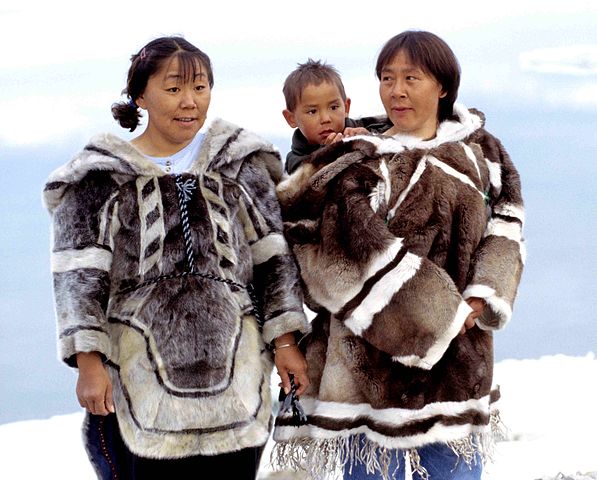
“The goal of the Indian Act was one of assimilation and the arduous task of civilizing the savages—a national agenda. Ironically, what this type of policy did was subjugate women to the status of chattel of their husbands.” ~ Lynn Gehl
~
I recently reread a book called The Round House by best-selling Lakota novelist, Louise Erdrich.
The narrator and main character, Joe, is the adolescent son of two loving parents, growing up on an Ojibwe reservation in North Dakota. His father works as a judge in the tribal legal system; his mother works in the tribal registry office, handling the convoluted web of privileges and duties tied to one’s genealogy and ancestry.
In the summer of his 13th year, Joe’s mother, Geraldine, was brutally raped and doused in gasoline but escaped before her attacker could kill her. Geraldine had been a vivacious, kind, responsible wife and mother prior to the crime; her position at the tribal registry office played a direct role in her being targeted. She retreats into her room and into herself for weeks, refusing to divulge the details of the attack, including who did it.
“Her serene reserve was gone—a nervous horror welled across her face. The bruises had come out and her eyes were darkly rimmed like a raccoon’s. A sick green pulsed around her temples. Her jaw was indigo. Her eyebrows had always been so expressive of irony and love, but now were held tight by anguish. Two vertical lines, black as if drawn by a marker, creased her forehead.”
The family and authorities only know that the crime happened somewhere near the round house, an old log hexagon once used for rituals. The quest for justice consumes the family. The court case ends up resting on the question of where the attack took place—as different laws apply to different jurisdictions, and it is not known whether the rape took place on reservation, state, or federal land. Because the jurisdiction could not be determined, no legal process was possible, and, ultimately, the perpetrator is set free.
Geraldine is supported by her community without question or hesitation. Many neighbors and relatives ask Joe how his mother is doing and offer kindness, whether in the form of thoughtful words or a casserole. Everyone condemns the attacker without in any way blaming, shaming, or belittling the victim.
Erdrich cites a 2009 Amnesty International report that found that one in three Native American women are raped—86 percent of these crimes are committed by non-native men, most of whom are never prosecuted.
But discrimination against North American indigenous peoples is not exclusive to the United States. Canada, too, has a long history of legalized racism. Since the implementation of the Indian Act in 1876, ongoing sex discrimination has signaled to all concerned that Indigenous women are not equal.
The Indian Act is still the primary statute through which the federal government in Ottawa administers all relations with First Nations peoples and individuals. Its original intention was clearly to eradicate First Nations culture and force the Aboriginals to assimilate into Euro-Canadian society.
According to the law, women are inferior; they are refused the same rights that males are given. The Indian Act has enabled human rights violations and traumatic social and cultural disruption for nearly a century and a half. The Indian Act, “stripped women of their rights socially, politically, and economically and made them dependent people.” By Euro-Canadian standards, this was the appropriate place for Indigenous women on the social evolutionary totem pole.
The continuing effort to remove gender inequalities from the Indian Act is challenging, as paternalism is now fully entrenched in Aboriginal communities.
“Native women have been struggling internally as well as externally to have their rights acknowledged. The oppressed have often proven to be the oppressor.”
The antiquated Indian Act continues to play an integral role in the lives and juridical identities of Aboriginal peoples throughout Canada.
The Indian Act has created false social categories of identity such as “Status” and “Non-Status Indians,” and applied legal recognition to a person’s First Nations heritage. This determination of status is important, as it determines whether people are given certain rights such as the right to live on a reservation or to be exempt from paying taxes. This administration of status is a state-sponsored form of assimilation and cultural destruction.
Amendments made in 1951 discriminated against First Nations women in particular—namely, the loss of status for a woman marrying a Non-Status man. In other words, a woman’s status rights were based solely upon her husband and father.
Adding insult to injury, a Non-Status woman who married a man with status would gain status herself. A woman lost her status entirely if she was widowed or abandoned by her husband. She also lost membership in her own band by marrying a Status man who belonged to a different band and, thereby, automatically and legally became a member of her husband’s band or tribe.
In 1996, the Royal Commission on Aboriginal Peoples found many of the Indian Act’s measures to be oppressive, and noted that recognition as “Indian” in Canadian law often had nothing to do with one’s Indian ancestry.
Lynn Gehl, Ph.D., “is an Algonquin Anishinaabe-kwe. She is an advocate, artist, and writer and is an outspoken critic of colonial law and policies that harm Indigenous women, men, children, and the land.” In her report on the topic, she eloquently declares:
“I will never see myself as a Canadian first, but rather as a First Nations person. My ideologies of who I am and who my ancestors were will always extend beyond national policies and boundaries of control and assimilation. Neither identity nor human behavior can be constructed through rigid definitions such as the Indian Act. My identity as an Aboriginal person was achieved through political struggle and the need to realize the potential of my genetic memory. I feel this way despite the fact that I am not a ‘legal’ Indian.”
Only when women and the Non-Status population are included in the nation building process will the First Nations be empowered as a self-determined people.
References:
Erdrich, Louise. The Round House. New York: Harper Perennial, 2013.
Gehl, Lynn. “‘The Queen and I’: Discrimination Against Women in the Indian Act Continues.” Academia.edu. Summer 2000.
~
~
Author: Michelle Margaret Fajkus
Image: Wikimedia Commons
Editor: Leah Sugerman










Read 2 comments and reply